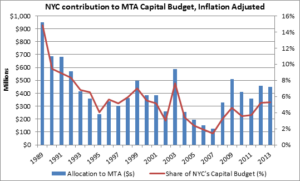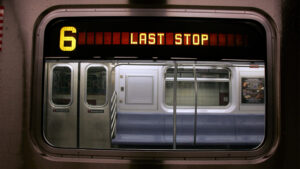Public transit is how many Americans rely on getting to work, going to the grocery store, or getting access to healthcare. The majority of Americans relying on public transit are communities of color, as they are six times more likely to not have access to a car.
So why are public transportation budgets beginning to be slashed?
Organizations and political groups have spent millions on campaigns and candidates to get them to support increasing highway spending and reducing public transportation spending statewide and federally. Their goal is to get more Americans into their car and spending money in their industry, instead of riding public transit.

These highways help mostly white wealthier communities, taking money away from public transit and effectively hurting poor, predominantly people of color communities.
The slashing of public transit is occurring in New York City as the M.T.A subway and bus services are facing cuts of 40%. Weekend services would be cut the most, 15-minute wait times between trains and some lines just cut out altogether.
With this cutting of lines and extended wait times, low-income and minority communities could have no way to get to work, limited options of accessing healthcare, and a hard time going outside of their communities. With no way to get to work, or not having a reliable way of getting to work, people could lose their jobs, having to apply for unemployment as they look for a job not requiring transit.
While both high-income and low-income workers use public transit, higher-paid workers are more likely to be able to work remotely. Low-income workers do not have that option as readily available. More low-income workers are deemed essential and working in the service industry, relying on public transit.

With the ongoing COVID-19 pandemic, low-income communities have already been hit the hardest, and limiting public transportation is hurting them even more.
The rhetoric about public transportation has made it out as a money pit, not showing the expansive value public transportation holds.
While limiting public transportation not only hurts the people traveling on public transit, it also could erase 450,000 jobs. These jobs rely on the people coming into the city, spending money, and using their services. With fewer people having the ability to enter the city, it effectively hurts their business. An increase in public transit funding would directly lead to more job growth than highway spending.
Limiting public transportation hurts low-income communities, hurts businesses that rely on the people brought in by public transit, and can negatively affect the New York economy as a whole.
Neighborhood FORWARD believes in the importance of public transportation. We believe that low-income communities deserve to have a way to get work, a way to access healthcare, and a way to go further than somewhere within walking distance.
